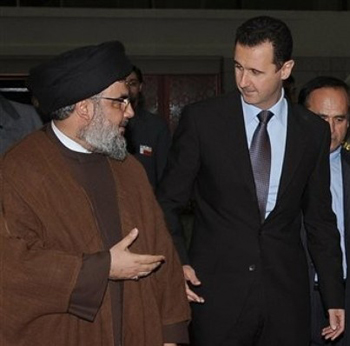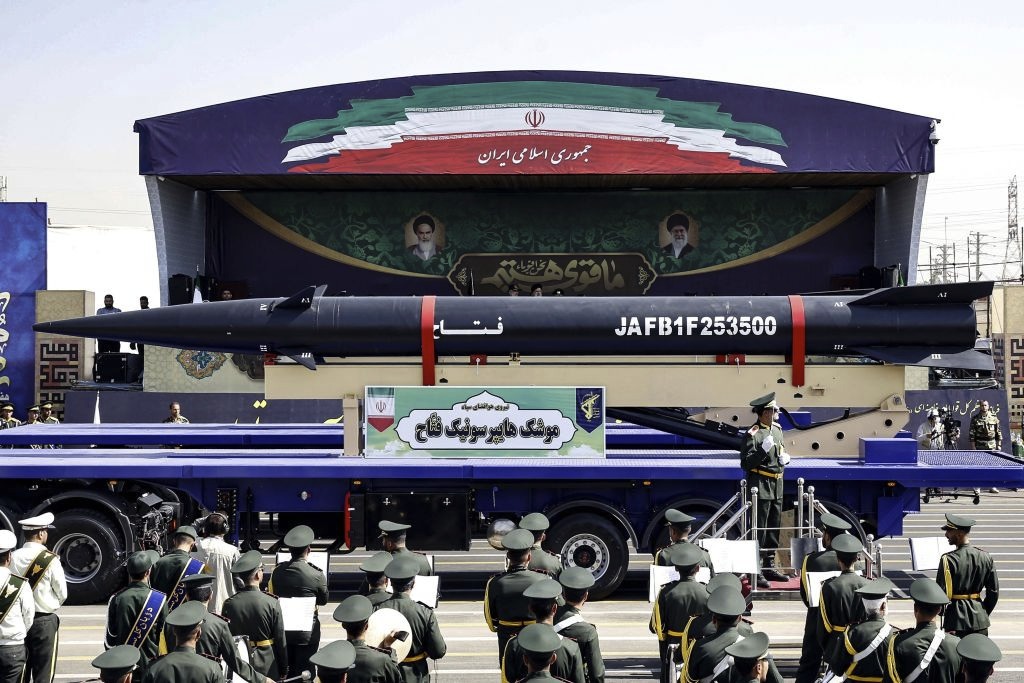If Syria breaks apart, will Lebanon too?
Michael Young/The Daily Star/Jun. 25, 2015
Iran is reportedly seeking to consolidate an Alawite-dominated ministate in Syria that includes Damascus, the coast and areas in between, including Homs and Hama.
Within this rump territory, Tehran intends to safeguard Bashar Assad’s rule while also ensuring that there is geographical continuity with Hezbollah-controlled districts in Lebanon.
This plan, which is tantamount to partition, shows the thinking behind Iran’s strategy in the Middle East. In Iraq, Syria and even Yemen, the Iranians have exacerbated and exploited sectarian divisions, knowing that this is their only means of asserting control in Sunni-majority Arab societies. How ironic that this was once regarded as Israel’s evil intent, one destined to break up the Arab world into debilitated entities to better rule over the region.
In Iraq the Iranians, through the politicians they support and their proxy Shiite militias, have hindered the formation of a Sunni national guard to counter ISIS, in that way further aggravating sectarian discord. In Syria the Iranians have aided and abetted sectarian cleansing in Homs and the Qalamoun, while reportedly urging the Assad regime to abandon outlying Sunni-majority areas that the regime no longer has the manpower to defend.
One question mark is the fate of Aleppo. The regime appears to want to retain a presence in the second-largest Syrian city, probably for its symbolic value. If Iran’s intentions are being properly interpreted, however, Aleppo is one of those places that must be abandoned as an unnecessary drain on the Syrian army. Indeed, by most accounts, Aleppo, with its supply lines through Idlib province cut, is likely to fall to the rebels in the near future.
From Lebanon’s perspective what do Iran’s actions and the changes in Syria mean? For some observers the effective partition of Syria may lead to similar dynamics in Lebanon. And Iran’s impulse to divide societies in order to reinforce its own power or that of its proxies can only facilitate such an outcome.
However, things may not be so clear cut. Lebanon has proven remarkably resilient in the past four years, despite the momentous repercussions of the Syrian conflict on its politics, society and economy. What had seemed a country almost destined to fall apart because of the war next door has remained relatively unified.
Sort of. Perhaps an explanation can be sought in the fact that unity in Lebanon is different than unity in places such as Syria and Iraq. There, Arab nationalist regimes once sat atop societies that were divided in both sectarian and ethnic terms. However, those regimes never established social contracts that acknowledged and accounted for these divisions. Instead, they imposed a compulsory Arab identity on all, which served to conceal deep rifts in society.
Lebanon alone in the region recognized its sectarian divisions and devised an accord to take them into consideration. The National Pact of 1943 has been far from perfect, but it was not an ersatz creation that claimed unity in a country purporting to be a part of a larger Arab nation. Lebanon’s confessional power-sharing agreement could trace its roots back to the Double Qaimaqamate of 1842 and later to the Mutassarifiya established in 1861. For all its failings, the sectarian system was a relatively accurate reflection, and byproduct, of political developments in the 19th and 20th centuries, no matter what inveterate foes of sectarianism say.
Paradoxically, Lebanon’s centrifugal forces may provide a cushion against the crumbling of Syria. In other words, the impulse of the different sectarian groups to form their own ministates would probably be tempered by the fact that Lebanon is in some regards already a confederation of sects. Communities run their own personal affairs independent of others. Due to the Civil War there is also significant geographical separation, so that areas of Sunni, Shiite, Maronite and Druze concentration are easy to delimit, even if all contain numerical minorities from other sects. In urban areas sectarian cohabitation is more common, to the extent that sectarian violence would be devastating, but also indecisive.
Economically speaking, the partition of Lebanon would pose immense challenges for ensuing ministates. They could not survive in autarky, nor are communities, for all their differences, used to living isolated from each other. Sectarian interaction, for cultural, commercial, social and even political reasons, is ingrained in the society and cannot easily be stamped out by artificial constructs.
But overconfidence is no option either. For Lebanon to weather the partition of Syria, as it resisted partition during its own civil war, the society has to constantly reaffirm the principles of sectarian coexistence and avoid using the political system as a means of fulfilling partisan agendas. As Bosnia, Syria and Iraq have shown, divorces in mixed states invariably lead to great violence as every community tries to carve out a “pure” territory for itself. The calamitous consequences almost invariably last for decades.
Hezbollah, too, will have to be careful. It has broken almost all the rules of the sectarian game in the past decade, alienating the Sunni community irreparably. At the same time the party knows that a sectarian war in Lebanon would destroy everyone, and that any aspiration it has to control the whole country is delusional. The winds from Syria will batter us for some time yet, but the assumption that Lebanon is next probably overstates things.
**Michael Young is opinion editor of THE DAILY STAR. He tweets @BeirutCalling.






















